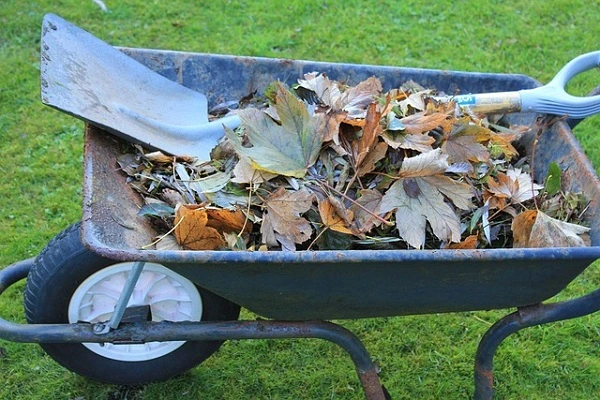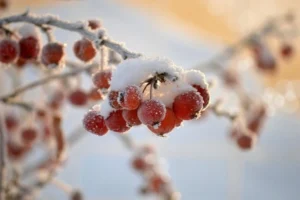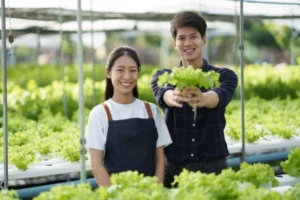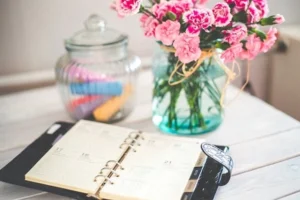Let’s face it—growing plants in a small home can feel like a juggling act. You’re balancing limited space, light, time, and resources, all while trying to grow something fresh and satisfying.
But here’s the good news: your tiny garden can do more than just survive—it can thrive sustainably.
If you’re already using a water-based (or hydroponic) grow method and wondering what to do with all those kitchen scraps, this article is for you. We’re talking about closing the loop with a few simple, eco-conscious habits.
No need for a backyard. No fancy setups. Just smart, homemade strategies that fit into your small lifestyle.
Ready to grow greener? Let’s dive into how composting and water-based culture can team up for something better.
What Is Water-Based Culture and Why Should You Care?
You’ve probably seen the term “water-based gardening” tossed around, but what does it actually mean? At its core, it’s just growing plants without traditional soil. Instead, roots are fed directly using water mixed with nutrients.
This method is perfect for small spaces. Why? Because it’s compact, clean, and surprisingly easy to manage once set up. No soil bags, no mess, and way less guesswork when it comes to watering.
Many home growers use jars, plastic bottles, or shelf-friendly containers filled with water and a splash of nutrients. It’s like giving your plants room service—they get what they need delivered straight to the roots.
The Key Benefits for Small-Space Growers
Water-based culture fits small apartments and limited setups because:
- It uses less water than traditional soil gardening
- It allows precise control over nutrients
- It’s lightweight and doesn’t make a mess
- It’s perfectly scalable, whether you have one jar or ten
And here’s the kicker—you don’t need anything high-tech. You can grow leafy greens, herbs, and even strawberries with nothing more than recycled jars and a sunny window ledge.
If you’ve been growing basil in a glass of water or trying out jar gardens with kitchen scraps, congratulations—you’re already dabbling in hydroponics.
It’s not about having a high-end setup. It’s about understanding how plants thrive when their roots get exactly what they need. When paired with eco-conscious practices like composting, it becomes a full-circle, low-waste way to garden smarter at home.
Composting in Small Homes – Yes, It’s Possible
When people hear “composting,” they usually imagine a big outdoor bin and the smell of rotting food. But composting doesn’t have to be messy—or take up much space.
In fact, composting can be done right inside your kitchen or on a shelf with zero odor and minimal effort.
Compact Composting Options That Work
If you’re short on space, try these methods:
- Bokashi bins – A fermentation process that breaks down scraps quickly with no smell
- Worm composting (vermicomposting) – A small bin of red wigglers that happily eat your leftovers
- Countertop composters – Some are electric, others are just smart containers with charcoal filters
Each method works in a small footprint and can be tucked away in a cabinet or corner.
What to Compost (and What to Avoid)
You don’t need a ton of scraps to get started. Some common, compost-friendly items include:
- Fruit and veggie peels
- Coffee grounds
- Crushed eggshells
- Shredded paper or napkins
Avoid meat, dairy, and oily foods. They attract pests and slow down the breakdown process.
No Garden? No Problem
Even if you don’t have outdoor soil to toss finished compost into, you can still use the end product. Compost can be turned into a nutrient-rich tea or used to amend small growing setups. It’s not about size—it’s about smart use.
If you’re already growing at home, composting turns your waste into value. And that’s what sustainable gardening is really all about.
Why Pairing These Two Makes Sense
If you’re already growing plants using water and skipping the soil, you’re off to a clean, efficient start. But what happens to all those veggie scraps and coffee grounds from your kitchen? Most of them probably end up in the trash.
That’s a missed opportunity.
When you pair water-based gardening with composting, you create a loop—what you don’t eat becomes what your plants do. It’s one of the simplest ways to boost sustainability in a small-space setup without needing more room or fancy gear.
The Loop That Works for You
Here’s how the cycle flows:
- Kitchen scraps → compost or worm castings
- Compost outputs → liquid nutrients or soil amendments
- Nutrients → added to your plant water
- Plants grow → and feed you again
It’s a circle that feeds itself—literally.
Reduce Waste, Boost Plant Health
Using compost with your water-fed plants means you’re reducing how much you throw away. But it’s not just eco-friendly—it’s effective. Nutrients from compost teas or worm castings add organic matter your plants might not get from store-bought mixes.
You’ll also save money over time, especially if you’re brewing your own compost-based supplements at home.
The best part? You don’t need a garden, backyard, or big setup to do any of this. Pairing composting with water-based growing makes your space smarter, your habits greener, and your plants just a little bit happier.
It’s a small shift with a big impact.
How to Safely Use Compost Outputs in Water-Based Gardening
So you’ve got compost—or maybe worm castings—building up from your kitchen scraps. Great. But can you just scoop it into your plant jars? Not quite.
Using compost in water-based gardening takes a bit of care. The goal is to feed your plants, not clog their roots or create gunk.
Go Liquid When Possible
One of the easiest and safest ways to add compost to your setup is by making compost tea. This isn’t something you drink—it’s a gentle, plant-friendly liquid made by soaking compost in water for a day or two.
To make compost tea:
- Mix one part compost to three parts clean, non-chlorinated water
- Let it sit for 24–48 hours
- Strain it through a fine cloth or coffee filter
- Use it to water your plants directly
This avoids mess and delivers nutrients straight to the roots.
Don’t Add Solids to Still Water
Avoid placing chunks of compost directly into your containers. It can break down slowly, make water murky, and potentially grow bacteria. Roots need oxygen and clarity, and solid compost can interrupt both.
Instead, if you want to use worm castings or solid material:
- Place it near root zones in mesh pouches
- Add it to grow plugs during seed starting
- Use it sparingly and monitor plant response
A little goes a long way. When done right, compost outputs can enrich your water-fed plants without disrupting their delicate balance.
It’s about staying clean, consistent, and plant-focused.
Tools and Materials That Keep It Simple
You don’t need to overhaul your space or order fancy gear to make composting and water-based gardening work together. A few budget-friendly tools and household items are all it takes to keep things clean, compact, and efficient.
Let’s break down what’s truly helpful—and what you can skip.
Must-Haves for Simplicity
To get started, you’ll want a few essentials that support both composting and clean feeding:
- A countertop compost bin – Preferably with a charcoal filter to trap odors
- A strainer or fine mesh bag – Useful for making compost tea or filtering worm leachate
- Clear glass or plastic jars – Ideal for growing and watching root development
- A small watering bottle – Helps deliver compost teas exactly where you need them
- pH strips or a tester – Optional, but helpful to monitor balance over time
None of these take up much space, and most can be repurposed from what you already have.
Keep It Low Maintenance
Avoid overcomplicating your process. A few tips:
- Label containers with dates to track brewing times
- Store compost tea in a cool place and use it within 48 hours
- Clean jars regularly to prevent buildup and odor
- Keep a small notebook or digital log to note what works (and what doesn’t)
Simplicity is the name of the game. The easier it is to keep up, the more likely you’ll stick with it. That’s what turns a good idea into a lasting habit—and a thriving space-saving garden.
In Summary
Sustainable gardening doesn’t need a yard, a shed, or a big budget. In fact, some of the most creative and eco-friendly practices thrive in small spaces—especially when you bring together homemade composting and water-based growing.
You’re not just planting basil on a windowsill. You’re creating a self-sustaining loop that turns everyday waste into something nourishing and practical.
Small Changes, Big Impact
Pairing these methods does more than save space:
- It reduces household waste
- It lowers your reliance on packaged fertilizers
- It helps your plants thrive with more natural inputs
- It creates a full-circle system from kitchen to garden and back again
And most importantly, it makes the process more rewarding.
Keep It Flexible
This isn’t an all-or-nothing lifestyle. Start with a small compost jar. Try out a tea. Track what happens. Make changes based on your space, your time, and your comfort level.
There’s no need to be perfect—just intentional.
You’ll find that your tiny garden becomes something bigger: a source of peace, productivity, and progress toward greener living.
So whether you’re growing mint in a mason jar or experimenting with worm tea on your salad greens, know this—every step counts.
In the end, it’s not about how big your space is. It’s about how thoughtfully you use it. That’s the real heart of eco-friendly, homemade gardening.




